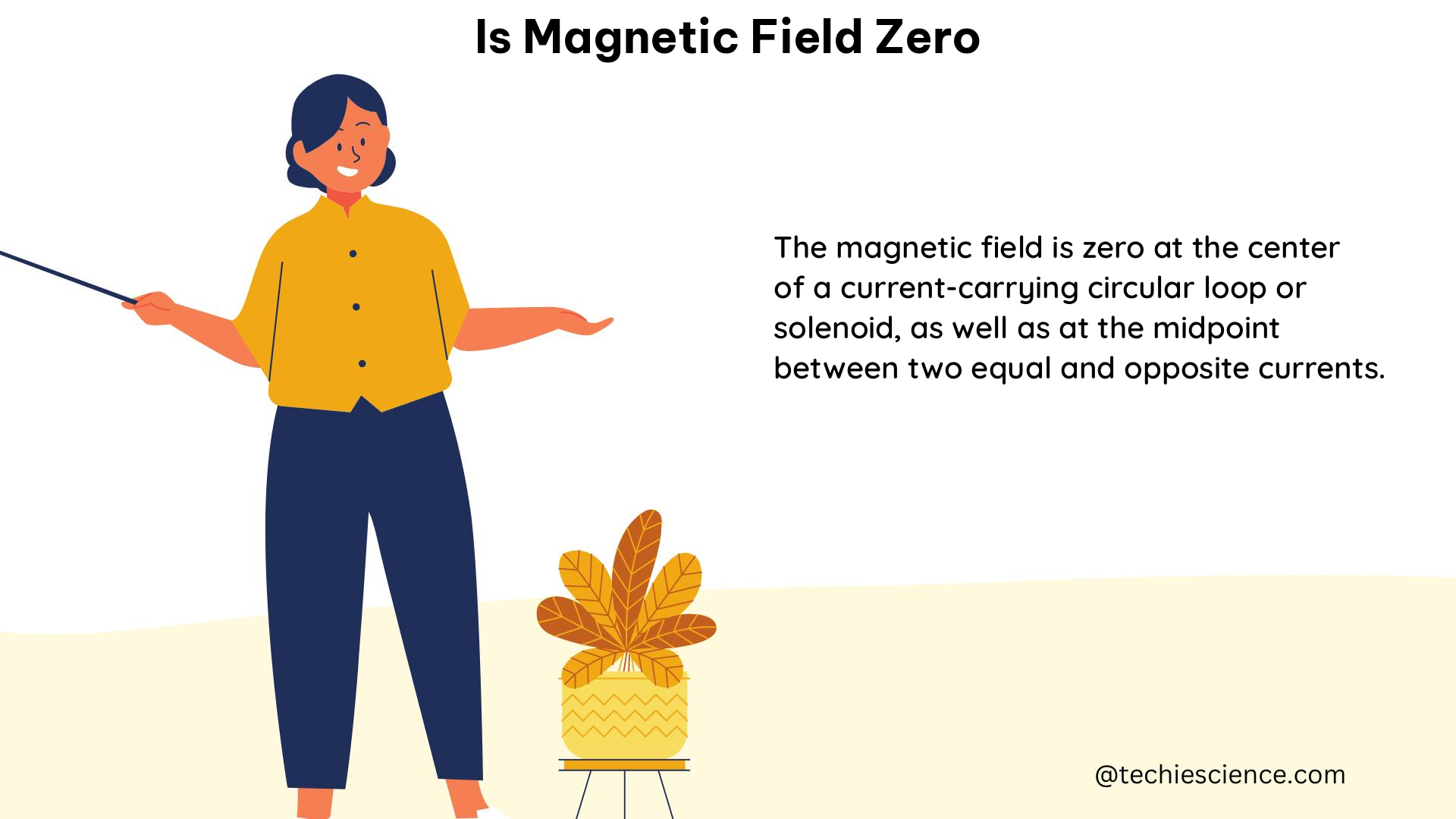A magnetic field is considered zero when its strength is equal to or less than the measurement threshold of the instrument used to detect it. This is a crucial concept in physics, as understanding the conditions under which a magnetic field can be considered zero is essential for various applications and experiments.
Understanding Magnetic Field Measurement
The measurement of a magnetic field is typically done using instruments called magnetometers or Gauss meters. These instruments are designed to measure the strength of a magnetic field, which is typically expressed in units of Tesla (T) or Gauss (G). The sensitivity of these instruments varies, and the minimum detectable magnetic field strength is known as the measurement threshold.
Measurement Threshold
The measurement threshold is the lowest magnetic field strength that an instrument can reliably detect. This threshold is determined by the design and sensitivity of the instrument. More sensitive instruments, such as those used in research laboratories, can detect weaker magnetic fields compared to less sensitive instruments used in everyday applications.
For example, a Gauss meter may have a measurement threshold of around 1 milligauss (mG), which means that it can reliably detect magnetic fields greater than 1 mG. If the magnetic field strength is below 1 mG, the Gauss meter will display a reading of zero, indicating that the magnetic field is below the instrument’s measurement threshold.
Factors Affecting Magnetic Field Measurement

Several factors can influence the measurement of a magnetic field and the determination of whether it is considered zero.
Instrument Sensitivity
The sensitivity of the instrument used to measure the magnetic field is a crucial factor. As mentioned earlier, more sensitive instruments can detect weaker magnetic fields, while less sensitive instruments may not be able to detect fields below a certain threshold.
Environmental Magnetic Fields
The presence of natural or artificial magnetic fields in the environment can also affect the measurement of a magnetic field. The Earth’s magnetic field, for example, is typically around 0.5 Gauss (G) at the surface, and this background field can influence the measurement of other magnetic fields.
Magnetic Shielding
Magnetic shielding can be used to isolate a region from external magnetic fields, allowing for more accurate measurement of the magnetic field within the shielded area. This is particularly important in experiments or applications where the magnetic field of interest is very weak.
Determining if a Magnetic Field is Zero
There are two main ways to determine if a magnetic field is considered zero:
-
Instrument Measurement: If the magnetic field strength is below the measurement threshold of the instrument used, it is considered to be zero. This is the most common method of determining a zero magnetic field.
-
Force Measurement: Another way to determine if a magnetic field is zero is to measure the force it exerts on a magnetic or ferromagnetic object. If the force is below the measurement threshold of the instrument used, the magnetic field is considered to be zero.
Instrument Measurement Example
Let’s consider the example of a Gauss meter with a measurement threshold of 1 milligauss (mG). If the Gauss meter displays a reading of 0 mG, it means that the magnetic field strength is below the instrument’s measurement threshold, and the magnetic field can be considered zero for practical purposes.
Force Measurement Example
Suppose you have a small magnetic object, such as a compass needle, and you want to determine if a magnetic field is zero. You can measure the force exerted on the magnetic object using a force sensor. If the force is below the measurement threshold of the force sensor, the magnetic field can be considered zero.
Practical Considerations
It is important to note that a magnetic field can never be truly zero, as there are always natural magnetic fields present in the environment, such as the Earth’s magnetic field. However, for many practical applications, a magnetic field can be considered zero if its strength is below the measurement threshold of the instrument used.
In some cases, it may be necessary to use more sensitive instruments or employ magnetic shielding to isolate the region of interest and accurately determine if a magnetic field is zero.
Conclusion
In summary, a magnetic field is considered zero when its strength is equal to or less than the measurement threshold of the instrument used to detect it. This can be determined through instrument measurements or by measuring the force exerted on magnetic or ferromagnetic objects. Understanding the concept of a zero magnetic field is crucial in various fields, such as physics, engineering, and scientific research.
References
- Clemson University, “223 Physics Lab: Magnetic Force due to a Current-carrying Wire”
- Wikipedia, “Magnetic susceptibility”
- Physics Stack Exchange, “Auxiliary magnetic field identically zero?”
- National Institute of Standards and Technology (NIST), “Magnetic Field Measurements”
- University of Cambridge, “Magnetic Fields and Shielding”
- American Physical Society, “Measurement of Magnetic Fields”
Hi..I am Indrani Banerjee. I completed my bachelor’s degree in mechanical engineering. I am an enthusiastic person and I am a person who is positive about every aspect of life. I like to read Books and listen to music.